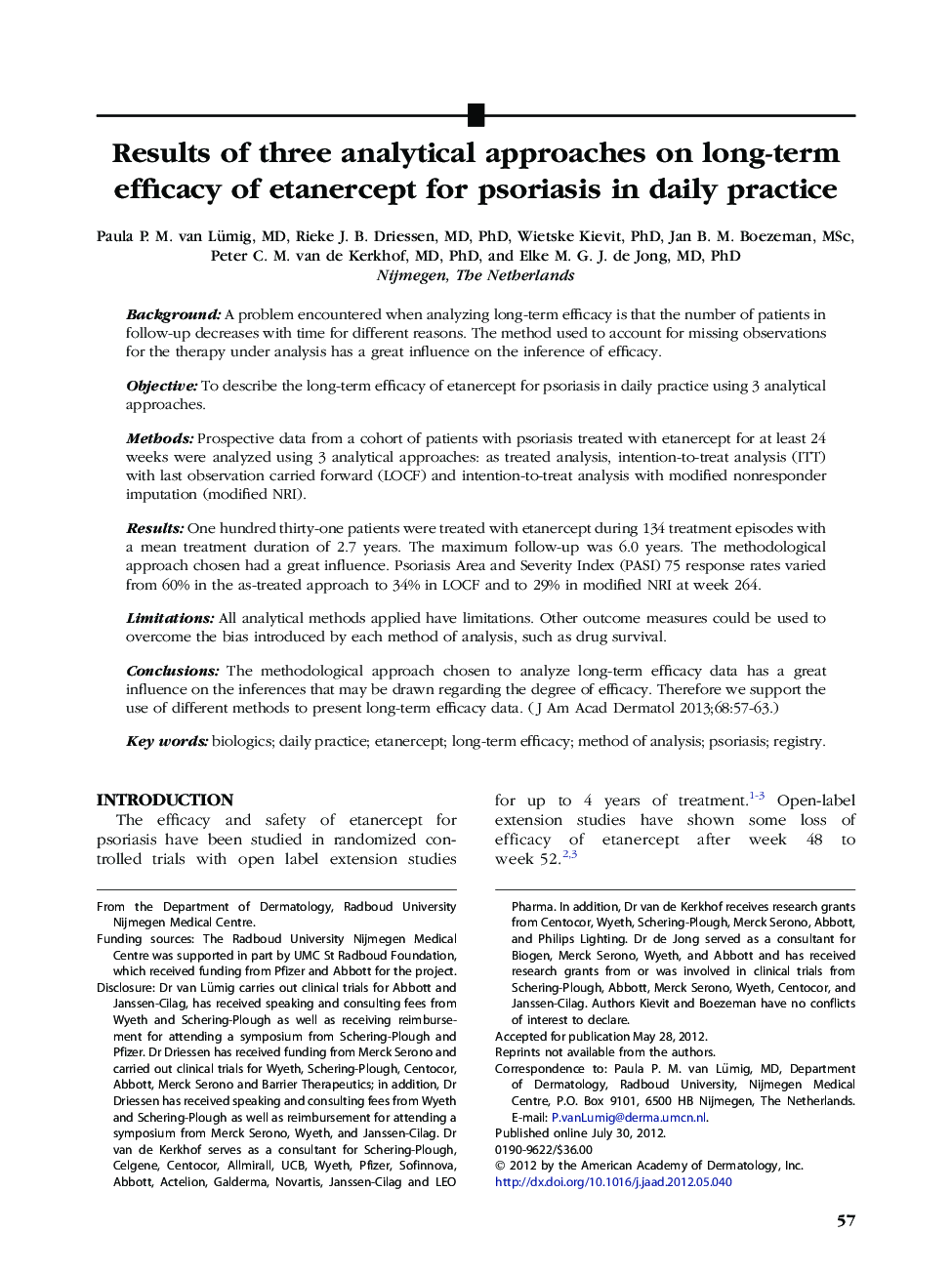| Article ID | Journal | Published Year | Pages | File Type |
|---|---|---|---|---|
| 3206537 | Journal of the American Academy of Dermatology | 2013 | 7 Pages |
BackgroundA problem encountered when analyzing long-term efficacy is that the number of patients in follow-up decreases with time for different reasons. The method used to account for missing observations for the therapy under analysis has a great influence on the inference of efficacy.ObjectiveTo describe the long-term efficacy of etanercept for psoriasis in daily practice using 3 analytical approaches.MethodsProspective data from a cohort of patients with psoriasis treated with etanercept for at least 24 weeks were analyzed using 3 analytical approaches: as treated analysis, intention-to-treat analysis (ITT) with last observation carried forward (LOCF) and intention-to-treat analysis with modified nonresponder imputation (modified NRI).ResultsOne hundred thirty-one patients were treated with etanercept during 134 treatment episodes with a mean treatment duration of 2.7 years. The maximum follow-up was 6.0 years. The methodological approach chosen had a great influence. Psoriasis Area and Severity Index (PASI) 75 response rates varied from 60% in the as-treated approach to 34% in LOCF and to 29% in modified NRI at week 264.LimitationsAll analytical methods applied have limitations. Other outcome measures could be used to overcome the bias introduced by each method of analysis, such as drug survival.ConclusionsThe methodological approach chosen to analyze long-term efficacy data has a great influence on the inferences that may be drawn regarding the degree of efficacy. Therefore we support the use of different methods to present long-term efficacy data.
